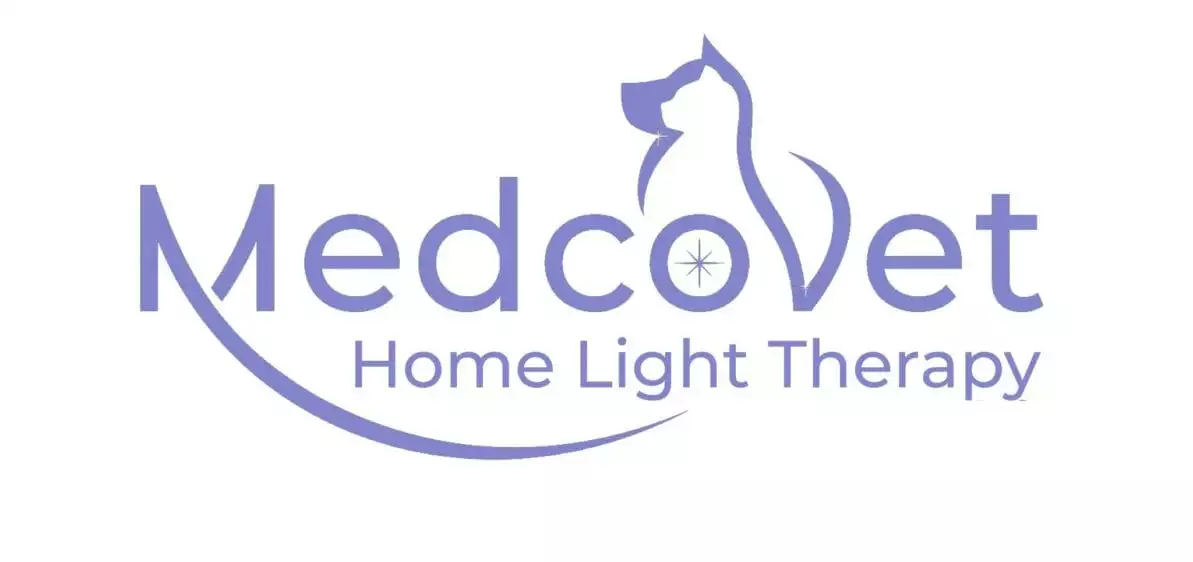MultiRadiance My Pet Laser 2.0: A Comprehensive Overview

Note:This article is part of our Red Light Round Up Series where we review and compare the top devices on the market.
One of our MedcoVet prescribers recently asked us to review the MultiRadiance My Pet Laser 2.0 at-home laser therapy solution for pets. At a retail price of $5995, the big question is how does it stack up to other devices on the market and is it worth the higher price tag?
This summary explores three key questions when reviewing the device:
- Can it do the job? – Are the device parameters inline with veterinary guidelines
- How long does it take? – How long will it take to give treatment (not all pets are patient)
- How do I know what to do? – How much technical and clinical support accompany the device
Can It Do the Job?
Getting Light to the Area That Needs It
As with any device, the main question is “can it get the job done and get therapeutic outcomes”. We looked at three key parameters to answer this question.
Wavelengths
Wavelengths are one of the most important factors in light therapy, as they determine how well light penetrates tissues. The right wavelength has a MUCH bigger impact on penetration than power, so that’s why it’s first on our list.
The My Pet Laser 2.0 uses three key wavelengths:
- 660nm (Red): Targets surface-level tissues, promoting healing in the skin and superficial areas
- 850nm (Infrared): Penetrates deeper to help with muscle, tendon, and joint issues.
- 905nm (Superpulsed Infrared): Allows for even deeper tissue penetration while minimizing heat buildup.
These wavelengths are standard in veterinary light therapy and help ensure comprehensive treatment across multiple tissue layers.
Treating Through Fur
One of the challenges in pet laser therapy is getting light through the fur. In general about 80% of light gets lost in the fur which makes most devices on the market pretty useless.
MultiRadiance gets credit for being one of the few devices on the market that solve the “fur problem.” They solve the problem with “superpulsing”. Instead of having a constant stream of light, Multi-radiance emits very short very high-powered super pulses, which enable penetration through the fur.
For an example of how MedcoVet solved the fur problem, click here
Power/Power Density
The My Pet Laser 2.0 offers a total average power of 60-90mW. Because it operates using superpulsed technology, the short bursts of light mean less heat is generated, which can be safer, but the total energy delivered to the tissue over time is reduced. This lower average power results in longer treatment times to achieve the desired therapeutic effect, which brings us to our next section…
How Long Does it Take
Treatment Times

According to the WALT (World Association for Laser Therapy) guidelines, superpulsed lasers, like the My Pet Laser 2.0, require longer treatment times to achieve a therapeutic effect. Treatments typically last between 20-30 minutes per area (e.g. for arthritis in the stifle). This is because the small bursts of light from superpulsed lasers need more time to accumulate the therapeutic effect that continuous light (or chopped light) therapy would achieve in a shorter period. The longer treatment times align with the WALT specifications, ensuring that the proper dose of light is delivered, but it also highlights the time commitment needed for effective results.
Spot Size
The 4 cm² spot size of the My Pet Laser 2.0 means that it covers a relatively small area with each application. This small treatment area requires more sessions or longer sessions to cover larger parts of the body. For example, treating a large joint or muscle group will take significantly more time due to the need to cover multiple spots. Below we compared the My Pet Laser spot size to the MedcoVet Luma.
How Do I Know I’m Doing It Right
Support and Guidance
Using an advanced device like the My Pet Laser 2.0 can raise questions about proper usage, especially when dealing with pets. Unlike some other laser therapy devices, the My Pet Laser 2.0 does not offer an integrated app or direct support platform to guide pet owners through treatments. This means owners will need to rely heavily on the initial instructions provided by the clinic or manufacturer.
- Clinical Support: While the device is well-supported by clinical research, it does not offer a connected app for tracking treatments or communicating with your vet. If something seems off during treatments, such as an unexpected response from your pet or unusual device behavior, you’ll need to consult your clinic separately.
- Tailored Protocols: The My Pet Laser 2.0 is customizable in terms of adjusting settings, but there is no live guidance feature to help tailor protocols based on your pet’s progress. This could make it harder for pet owners to feel confident they’re delivering the optimal dosage at every stage of their pet’s recovery.
- Updated Protocols: Since there is no integrated app, updating protocols based on your pet’s progress requires manual communication with your veterinarian. This can be cumbersome and may reduce overall compliance with the treatment plan.

Technical Support
The My Pet Laser 2.0 is built to be reliable, but like any medical device, technical issues could arise. There is no real-time troubleshooting feature available via an app, so pet owners must rely on customer support or clinic resources for assistance. If something goes wrong or the device shows unusual behavior, you will need to reach out to the manufacturer or clinic for guidance, which could delay treatments.
Conclusion
The MultiRadiance My Pet Laser 2.0 is a powerful, clinically backed device capable of delivering effective light therapy to pets, particularly for deep tissue issues. It offers a range of therapeutic wavelengths and superpulsed technology, which minimizes heat and allows for deeper penetration. However, longer treatment times, and limited user guidance may make it challenging for pet owners to use consistently and confidently. It’s essential to weigh the benefits of its deep tissue capabilities against the time commitment and precision required for successful treatment.


Great article! I really appreciate the clear and detailed insights you’ve provided on this topic. It’s always refreshing to read content that breaks things down so well, making it easy for readers to grasp even complex ideas. I also found the practical tips you’ve shared to be very helpful. Looking forward to more informative posts like this! Keep up the good work!
Treatment time is way off. It is two minutes to a maximum of five minutes. Plus there is an app . . . So there are some errors in this article.
Thank you for your comment! We’d like to clarify a few points regarding the treatment times and app information.
Treatment Times:
The treatment durations mentioned our the article are based on the WALT (World Association for Photobiomodulation Therapy) guidelines and are specific to superpulsed lasers like the My Pet Laser 2.0. Superpulsed lasers emit energy in short bursts, which requires more time to accumulate the therapeutic dose compared to continuous-wave or chopped lasers. This is why treatment sessions can range from 20-30 minutes per area (for example, when treating arthritis in the stifle). Shorter sessions of 2-5 minutes may not be sufficient for delivering the recommended energy dose with superpulsed technology, which could limit therapeutic effects
Regarding the App:
MultiRadiance doesn’t include an app with their product, though there is a third-party app available for purchase separately. However, this app is designed more for clinicians than pet owners and lacks clear differentiation in treatment protocols for certain conditions (like IVDD and DJD, which ideally require distinct approaches). Additionally, the app mentions different pulse frequencies for treating different conditions. However, the most comprehensive research to date on pulsing doesn’t fully align with these conclusions. Here’s a link to the best article on pulsing, which delves into how pulsed and continuous light affect healing, but the field is still evolving. If you know of any studies demonstrating the benefits of specific pulse rates, we’d love to review and share them.
We hope this clears up the details, and I appreciate your engagement! Please feel free to reach out with further questions.
My Pet Laser is a great device based on proven technology. I have been using it for two years. This is clinical caliber unit with ease of use of a home device. Treatment time are very short.
Hi Brian,
Thanks for your comment. You’re right, the My Pet Laser is a great device. It’s one of the few devices on the market that has a solution for getting through pet fur and that’s why it’s part of our list of top products. In terms of treatment times, we’re basing our article on the World Association of Laser Therapy (WALT) guidelines for treatment. The times provided in those guidelines match the parameters of the My Pet Laser. We chose those guidelines because they represent the work of clinicians, researchers and vendors and are the best resource available for standardizing treatment times.
Hope this helps,
The MedcoVet team